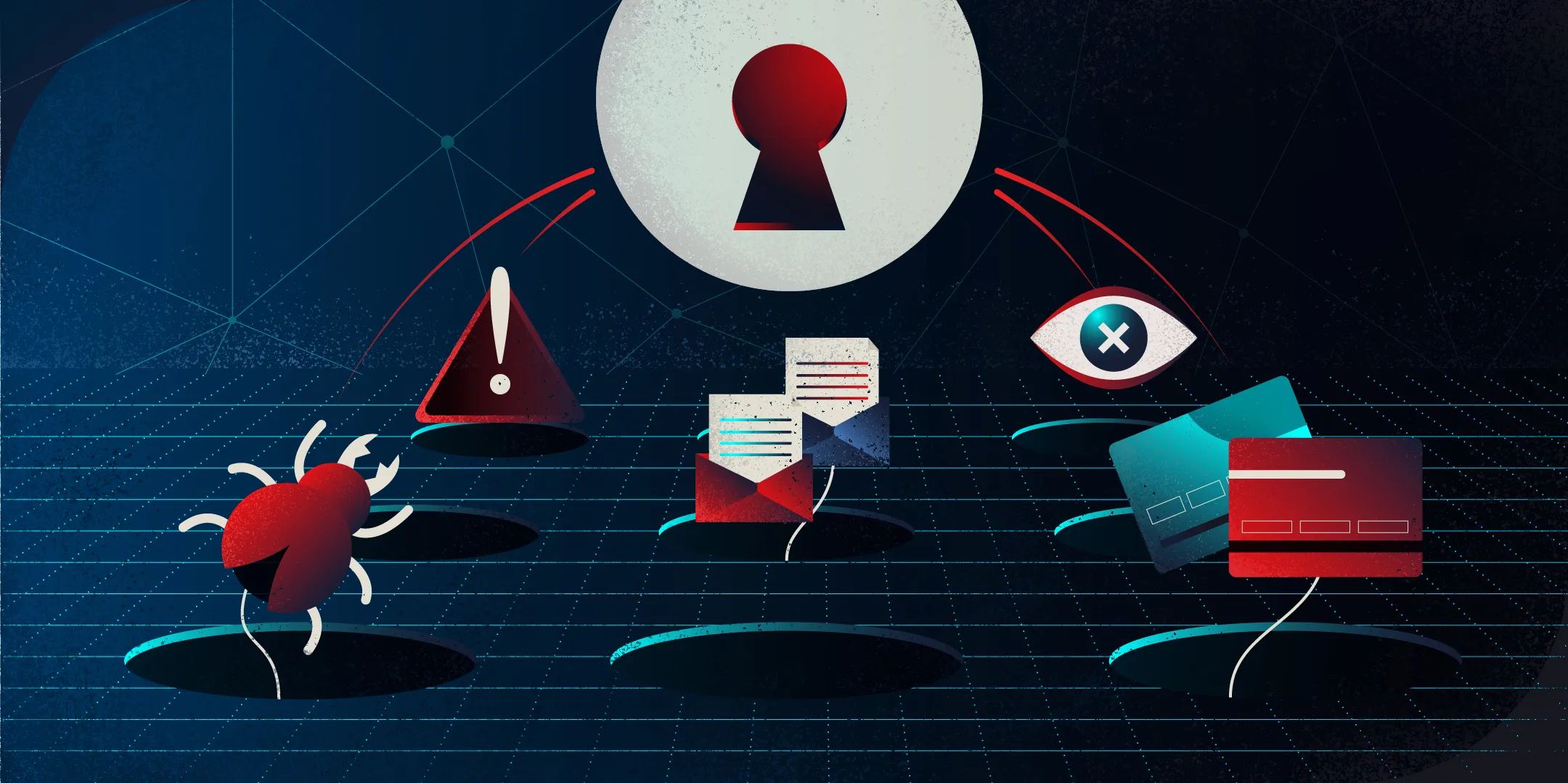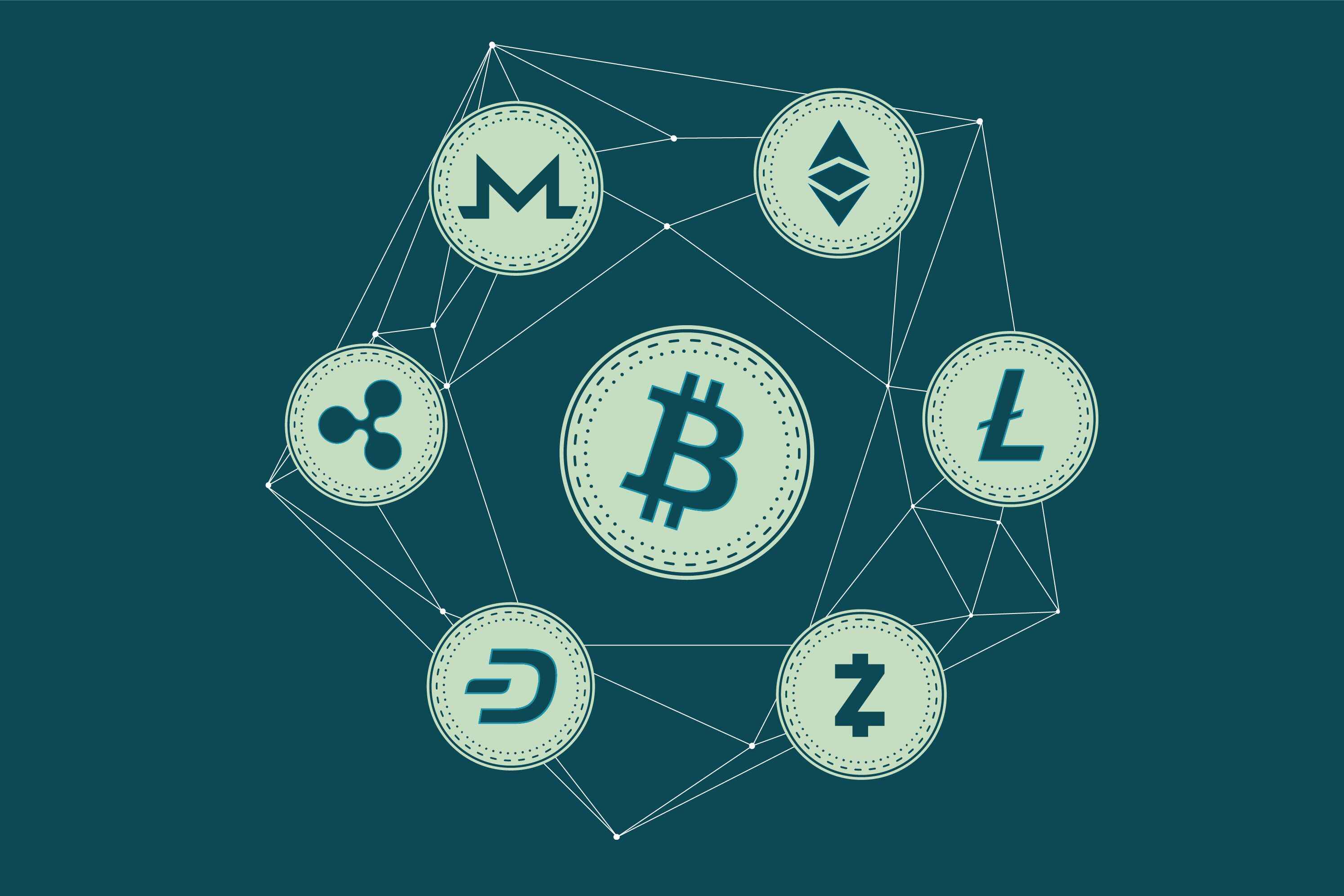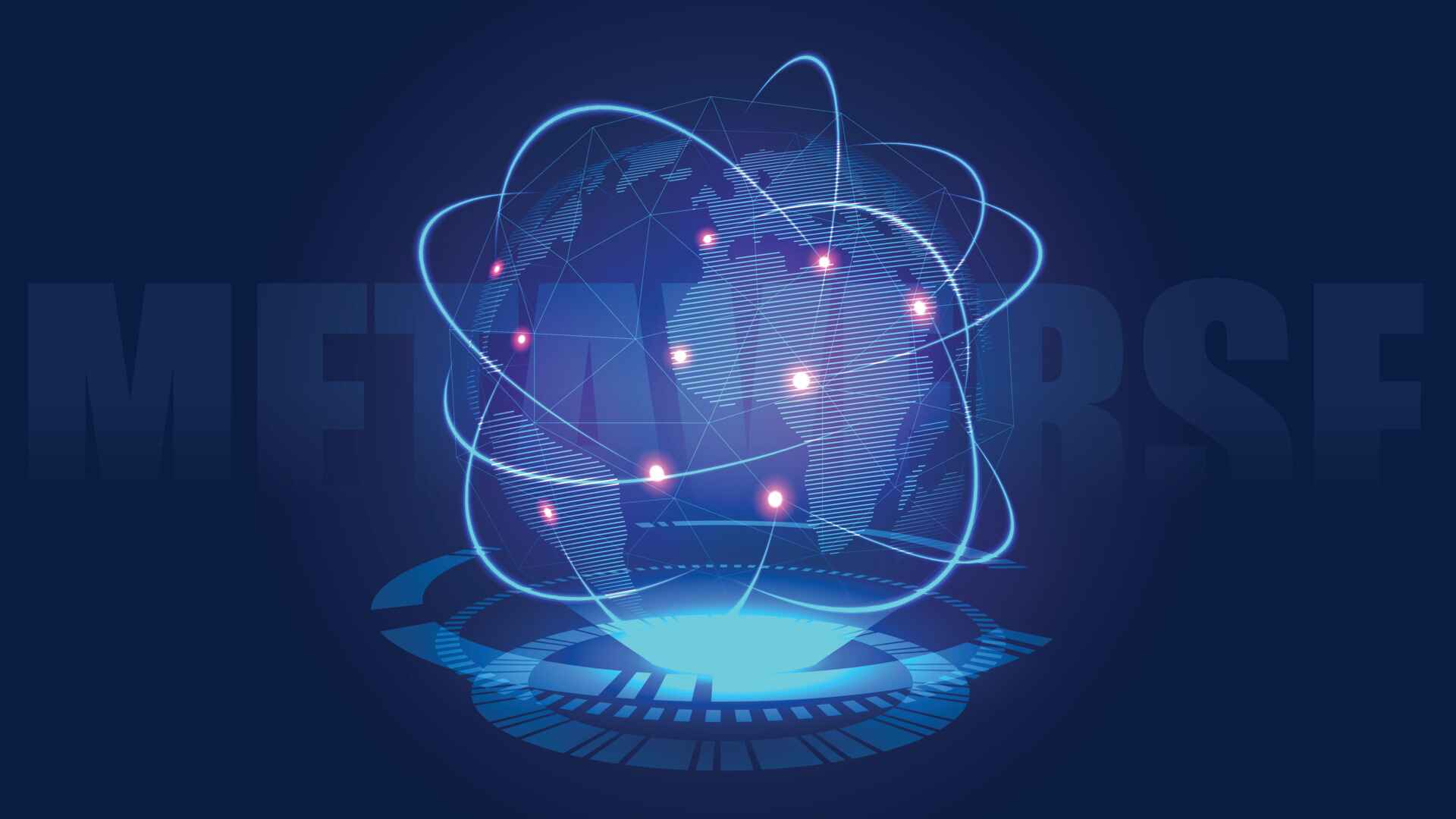Introduction
The concept of the Metaverse has gained significant attention in recent years, especially with the rise of virtual reality and augmented reality technologies. It refers to a virtual world where people can interact with each other and their surroundings through digital representations of themselves, objects, and environments. This immersive and interconnected online realm has the potential to revolutionize various aspects of our lives, from entertainment and socialization to business and education.
However, with the rapid growth of the Metaverse comes the need to prioritize its security. Just like the physical world, the virtual realm is susceptible to various threats, such as cyberattacks, privacy breaches, and fraudulent activities. Maintaining a safe and secure Metaverse is crucial to protect users’ data, ensure fair and ethical interactions, and foster the growth of this digital environment.
Various stakeholders play a vital role in helping to keep the Metaverse safe. In this article, we will explore the key players in ensuring Metaverse security and the challenges they face in maintaining a secure online environment.
What is the Metaverse?
The Metaverse is a virtual world that incorporates elements of virtual reality, augmented reality, and the internet to create an immersive and interconnected digital environment. It is a collective space where users can interact with each other and their surroundings through digital avatars, explore virtual landscapes, engage in various activities, and even conduct business transactions.
Unlike traditional video games or social media platforms, the Metaverse aims to provide a seamless and continuous experience that transcends individual applications or websites. It is envisioned as a persistent virtual universe that users can access through different devices, such as virtual reality headsets, augmented reality glasses, smartphones, or computers. This convergence of physical and digital realms blurs the boundaries between reality and virtuality, creating a rich and dynamic online experience.
In the Metaverse, users have the freedom to customize their digital identities, create and trade virtual assets, participate in social interactions, collaborate on projects, attend virtual events, and even build their own virtual realities. It is a vast and ever-expanding universe that offers endless possibilities for entertainment, communication, and innovation.
The idea of the Metaverse has been popularized through science fiction literature, movies, and video games. However, recent advancements in technology, such as blockchain, cloud computing, and high-speed internet connectivity, have brought the concept closer to reality. Companies and developers are now actively working towards creating immersive Metaverse experiences that can revolutionize various industries, including gaming, e-commerce, education, and even healthcare.
While the Metaverse holds tremendous potential for innovation and connectivity, it also raises important questions and concerns regarding privacy, security, and ethical considerations. As the virtual world becomes more integrated into our daily lives, it becomes increasingly imperative to ensure the safety and well-being of its users. Let’s explore the importance of security in the Metaverse and the key players involved in maintaining its safety in the following sections.
The Importance of Security in the Metaverse
As the Metaverse becomes an integral part of our digital lives, ensuring its security is of paramount importance. The immersive and interconnected nature of the Metaverse exposes users to various risks and threats, ranging from cyberattacks to privacy breaches and fraudulent activities. Safeguarding the Metaverse is crucial for protecting users’ personal data, maintaining trust in virtual transactions, and fostering a safe and inclusive online environment.
One of the primary concerns in the Metaverse is preserving user privacy. In this digital realm, users create and interact with virtual representations of themselves, known as avatars. They engage in conversations, share personal information, and participate in virtual activities. Protecting the privacy of users’ personal data, such as their identities, locations, and preferences, is essential to prevent unauthorized access, identity theft, and other forms of privacy violations.
Another significant aspect of Metaverse security is ensuring fair and ethical interactions. In a virtual world where users can buy and sell virtual assets, engage in virtual economies, and participate in social interactions, it is crucial to prevent fraud, scams, and unfair practices. Implementing security measures to prevent identity theft, deceitful transactions, and cheating is essential for creating a trustworthy virtual environment.
Moreover, the Metaverse brings together people from diverse backgrounds and cultures. Ensuring inclusivity and preventing discrimination in this digital realm is vital. Security measures must be in place to prevent harassment, hate speech, and other forms of harmful behavior, fostering a safe and welcoming space for all users.
Additionally, the Metaverse holds immense potential for innovation and economic growth. From gaming to e-commerce, businesses are exploring opportunities to establish a presence in this virtual realm. However, to instill confidence in users and attract investments, the Metaverse must offer a secure and stable environment. Protecting intellectual property, preventing copyright infringement, and resolving disputes are some of the security challenges that need to be addressed to facilitate the growth of the Metaverse.
Ultimately, the security of the Metaverse is not a singular responsibility but requires collaboration and cooperation among various stakeholders, including developers, government bodies, users themselves, security experts, and ethical hackers. Each has a role to play in maintaining a safe and secure digital environment. In the following sections, we will explore the key players involved in ensuring Metaverse safety and the challenges they face in carrying out their roles.
Key Players in Ensuring Metaverse Safety
Safeguarding the Metaverse requires the collaborative efforts of various stakeholders, each playing a crucial role in maintaining its safety and security. Let’s explore some of the key players involved in ensuring Metaverse safety:
1. Developers and Platform Operators: The developers and operators of Metaverse platforms hold a significant responsibility in upholding security standards. They must prioritize the development of secure systems, regularly update software to patch vulnerabilities, and implement robust authentication and encryption measures. By creating and maintaining secure platforms, they can minimize the risk of cyberattacks, data breaches, and other security threats.
2. Government and Regulatory Bodies: Government bodies and regulatory authorities play an essential role in establishing and enforcing laws and regulations governing the Metaverse. They ensure compliance with privacy laws, protect users’ rights, and establish guidelines for safety and security practices in the virtual world. Collaboration between governments, industry stakeholders, and academia is crucial to address emerging challenges and establish appropriate regulations.
3. Users and Community Members: The actions and behaviors of users themselves contribute significantly to Metaverse safety. Users must be vigilant about protecting their personal information, practice safe online behavior, and report any suspicious activity. Engaging in dialogue, raising awareness, and fostering a strong community that promotes security and ethical behavior enhance the overall safety of the Metaverse.
4. Security Experts and Researchers: Security experts and researchers play a vital role in identifying and addressing vulnerabilities in the Metaverse. They conduct risk assessments, perform security audits, and develop best practices to enhance the security posture of the digital environment. Their expertise ensures that potential threats are proactively addressed, creating a more secure Metaverse.
5. Ethical Hackers and Bug Bounty Programs: Ethical hackers, also known as white hat hackers, help identify security flaws by actively testing and probing Metaverse platforms. They collaborate with developers and operators, disclosing vulnerabilities and recommending solutions to ensure better security. Bug bounty programs, which incentivize researchers to report vulnerabilities, encourage a proactive approach to securing the Metaverse.
Collaboration and cooperation among these stakeholders are essential for maintaining a safe and secure Metaverse. It requires a collective effort to address security challenges, adapt to emerging threats, and foster a virtual environment that users can trust and engage with confidently. However, the journey towards achieving robust Metaverse security is not without its challenges. Let’s explore some of these challenges in the next section.
Developers and Platform Operators
Developers and platform operators play a critical role in ensuring the safety and security of the Metaverse. They hold the responsibility of creating and maintaining the infrastructure, software, and systems that power the virtual experience. Here are some key considerations for developers and platform operators in safeguarding the Metaverse:
Implementing Secure Architecture: Developers must design and implement secure architectures for Metaverse platforms. This involves considering factors such as data encryption, secure authentication mechanisms, and secure coding practices. By building security features into the foundation of the platform, developers minimize the risk of security vulnerabilities that could be exploited by malicious actors.
Regular Software Updates: Keeping software, frameworks, and libraries updated is crucial to address known vulnerabilities and protect against emerging threats. Developers should have a robust process in place for regular updates and patches. This ensures that security vulnerabilities are promptly addressed and mitigated.
Secure Transactions and Payment Processing: In the Metaverse, users engage in virtual transactions and exchange virtual assets. Developers need to implement secure payment processing systems that protect users’ financial information and prevent fraudulent activities. This includes utilizing encryption technologies, implementing secure payment gateways, and conducting regular security audits of transaction processes.
Data Privacy and Protection: Metaverse platforms handle a vast amount of user data, including personal information and virtual asset ownership. Developers must prioritize data privacy and protection by implementing robust privacy policies, obtaining user consent for data collection and usage, and securely storing and transmitting user data. Compliance with relevant data protection regulations is essential to maintain users’ trust and prevent privacy breaches.
User-Friendly Security Features: Developers should strive to create user-friendly security features that are easy to understand and use. This includes implementing strong password policies, multi-factor authentication, and providing clear user interfaces for managing privacy and security settings. By making security features accessible and intuitive, developers can promote safe user behavior in the Metaverse.
Collaboration with Security Experts: Developers should actively seek input from security experts and collaborate with them in evaluating the platform’s security posture. Vulnerability assessments, penetration testing, and regular security audits can identify potential weaknesses and enable developers to address them proactively.
Educating Users: Developers have a role in educating users about potential risks and best practices for staying safe in the Metaverse. This includes promoting awareness of phishing attempts, social engineering tactics, and other common forms of cyber threats. Providing resources, tutorials, and guidelines on platform security can empower users to protect themselves and contribute to a safer virtual environment.
By prioritizing security in platform development and operations, developers and platform operators can create a resilient and trustworthy Metaverse. However, they must also navigate several challenges and adapt to the evolving threat landscape, which we will explore in the next section.
Government and Regulatory Bodies
Government and regulatory bodies play a crucial role in ensuring the safety and security of the Metaverse. As the Metaverse becomes more integrated into our lives, it is essential to establish laws and regulations that protect users, prevent fraudulent activities, and promote ethical behavior. Here are some key considerations for government and regulatory bodies in safeguarding the Metaverse:
Establishing Legal Frameworks: Government bodies need to develop comprehensive legal frameworks that address the unique challenges and risks associated with the Metaverse. These frameworks should encompass areas such as data privacy, cybersecurity, intellectual property rights, virtual asset ownership, and consumer protection. By establishing clear guidelines, governments can provide a legal basis for addressing security issues and holding accountable those who engage in unlawful activities within the Metaverse.
Enforcing Compliance: Governments play a crucial role in enforcing compliance with relevant laws and regulations. This includes monitoring and investigating potential security breaches, taking legal action against perpetrators, and imposing penalties for non-compliance. By enforcing compliance, governments can deter malicious activities and promote a safer virtual environment.
Collaboration with Industry Stakeholders: Collaboration among government bodies, industry stakeholders, and academic institutions is vital to address the complex challenges of the Metaverse. Governments should engage in dialogue with developers, platform operators, security experts, and researchers to understand emerging security threats and develop appropriate regulations. Collaboration enables policymakers to make informed decisions and adapt regulations to keep pace with technological advancements.
Promoting Ethical Behavior: Governments should actively promote ethical behavior and responsible use of the Metaverse. This includes raising awareness about appropriate online conduct, combating harassment and hate speech, and promoting inclusivity within the virtual space. By fostering a culture of responsible behavior, governments can help create a safe and welcoming environment in the Metaverse.
Investing in Research and Development: Governments can support research and development efforts focused on Metaverse security. By funding cybersecurity initiatives, supporting academic research, and encouraging collaboration between researchers and industry, governments can drive innovation and address the evolving security landscape of the Metaverse.
International Collaboration: With the Metaverse transcending national borders, international collaboration among governments is crucial. Governments should work together to develop common standards, share best practices, and establish frameworks for cross-border cooperation in matters of security and user protection. This collaboration helps to ensure consistency and global harmonization of security measures in the Metaverse.
By actively engaging in the regulation and oversight of the Metaverse, government and regulatory bodies can contribute to a safer and more secure virtual environment. Their role in establishing legal frameworks, enforcing compliance, and collaborating with industry stakeholders is essential in addressing the unique security challenges of the Metaverse.
Users and Community Members
Users and community members play a vital role in ensuring the safety and security of the Metaverse. As active participants, their actions and behaviors can greatly impact the overall security of the virtual environment. Here are some key considerations for users and community members in safeguarding the Metaverse:
Safe Online Behavior: Users must practice safe online behavior in the Metaverse. This includes being cautious when sharing personal information, using strong and unique passwords, and being mindful of the websites, applications, and platforms they interact with. By practicing safe online behavior, users can mitigate the risk of falling victim to cyberattacks or fraudulent activities.
Reporting Suspicious Activity: Users should promptly report any suspicious or malicious activity they encounter in the Metaverse. This can include reporting phishing attempts, identity theft, online harassment, or any other form of security incident. By reporting such incidents, users contribute to the overall safety of the Metaverse and help to prevent others from becoming victims.
Engaging in Dialogue: Open and respectful communication within the Metaverse community fosters a collaborative effort to enhance security. Users should actively engage in discussions, forums, and community platforms to share information, strategies, and best practices for maintaining security. By engaging in dialogue, users can learn from one another and collectively work towards creating a safer virtual environment.
Education and Awareness: Users play a crucial role in educating themselves and others about security risks and best practices. By staying informed about the latest security threats, attending workshops or training sessions, and sharing knowledge with fellow users, they can empower themselves and the community to make informed decisions and protect their digital identities.
Responsible Content Creation and Engagement: Users should be mindful of the content they create and engage with in the Metaverse. This includes avoiding the creation or sharing of malicious or harmful content, respecting intellectual property rights, and refraining from engaging in online activities that may compromise the security and well-being of others. Responsible content creation and engagement contribute to a safe and positive virtual environment for all users.
Supporting Security Initiatives: Users can actively support security initiatives within the Metaverse community. This can involve participating in bug bounty programs, providing feedback to developers, and collaborating with security experts to identify and address vulnerabilities. By actively engaging in security initiatives, users can contribute to a more secure and resilient Metaverse.
Strong Community Standards: Users should actively promote and adhere to community standards that prioritize security and safety. This includes advocating for policies that combat harassment, hate speech, and unethical behavior, as well as fostering an inclusive and supportive community environment. By upholding strong community standards, users contribute to a positive and secure Metaverse experience for all.
Users and community members have a crucial role to play in ensuring the safety and security of the Metaverse. By practicing safe online behavior, reporting incidents, promoting education and awareness, and supporting security initiatives, users can collectively contribute to a more secure virtual environment.
Security Experts and Researchers
Security experts and researchers play a vital role in ensuring the safety and security of the Metaverse. Their expertise and knowledge in cybersecurity contribute to identifying vulnerabilities, mitigating risks, and developing best practices for maintaining a secure virtual environment. Here are some key considerations for security experts and researchers in safeguarding the Metaverse:
Vulnerability Assessments and Penetration Testing: Security experts and researchers conduct vulnerability assessments and penetration testing to identify weaknesses in Metaverse platforms and systems. By actively probing for vulnerabilities, they can provide valuable insights to developers and operators, enabling them to address security flaws before they can be exploited.
Threat Intelligence and Monitoring: Security experts and researchers continuously monitor the evolving threat landscape to stay updated on the latest security risks and trends. They analyze new attack vectors, gather threat intelligence, and develop strategies to mitigate emerging threats in the Metaverse. By sharing this knowledge with the community, they empower stakeholders to make informed decisions and strengthen their security measures.
Developing Security Guidelines and Best Practices: Security experts and researchers collaborate to develop security guidelines and best practices specific to the Metaverse. This includes recommendations for secure architecture, data privacy, authentication mechanisms, and virtual asset protection. These guidelines help developers, platform operators, and users understand and implement effective security measures.
Collaboration with Developers and Platform Operators: Security experts and researchers collaborate closely with developers and platform operators to evaluate the security of Metaverse platforms and systems. By working together, they can identify and address vulnerabilities, conduct security audits, and ensure that security measures are effectively implemented. This collaboration promotes a proactive approach to security.
Contributing to Security Standards and Regulation: Security experts and researchers contribute to the development of security standards and regulations for the Metaverse. Their expertise helps shape policies and guidelines that enhance the security and privacy of users. By actively participating in the development of standards, they can influence industry practices and ensure the adoption of robust security measures.
Engaging in Responsible Disclosure: When security experts and researchers discover vulnerabilities, ethical disclosure is crucial. They follow responsible disclosure practices by informing platform operators or developers about the security flaws they have identified, allowing them time to address and fix the vulnerabilities before making them public. Responsible disclosure helps protect users from potential threats and ensures that security fixes are implemented promptly.
Continuous Research and Innovation: Security experts and researchers consistently conduct research and innovate to stay ahead of emerging security threats in the Metaverse. They explore new technologies and methodologies, identify potential attack vectors, and develop new tools and techniques to improve the overall security posture of the virtual environment.
Security experts and researchers play a vital role in ensuring the safety and security of the Metaverse. By conducting vulnerability assessments, monitoring threats, developing best practices, collaborating with stakeholders, contributing to standards, engaging in responsible disclosure, and driving continuous research and innovation, they contribute to the integrity and resilience of the virtual environment.
Ethical Hackers and Bug Bounty Programs
Ethical hackers and bug bounty programs play a crucial role in ensuring the safety and security of the Metaverse. By actively searching for vulnerabilities and reporting them to developers and platform operators, ethical hackers contribute to the overall security of the virtual environment. Here are some key considerations regarding ethical hackers and bug bounty programs in safeguarding the Metaverse:
Ethical Hacking: Ethical hackers, also known as white hat hackers, use their technical skills and knowledge to identify security vulnerabilities in Metaverse platforms and systems. They conduct authorized hacking attempts to identify weaknesses and potential entry points that malicious actors could exploit. By finding vulnerabilities before they are utilized for malicious purposes, ethical hackers help developers and operators fix security flaws proactively.
Bug Bounty Programs: Bug bounty programs are initiatives implemented by organizations to encourage and incentivize ethical hackers to report vulnerabilities. These programs offer rewards, such as monetary compensation or recognition, to individuals who discover and responsibly disclose security vulnerabilities. Bug bounty programs not only motivate ethical hackers to actively seek out vulnerabilities but also provide an additional layer of security scrutiny for Metaverse platforms.
Collaboration with Developers: Ethical hackers collaborate with developers and platform operators to report discovered vulnerabilities and offer suggestions for improved security. This collaboration promotes a constructive relationship between security researchers and organizations, allowing for vulnerabilities to be addressed promptly. The exchange of information and feedback between ethical hackers and developers helps strengthen the overall security of the Metaverse.
Promoting Proactive Security Measures: By actively searching for vulnerabilities, ethical hackers promote a proactive approach to security within the Metaverse. Their efforts expose potential weaknesses and encourage developers to focus on creating secure systems from the outset. Ethical hackers also contribute to the dissemination of knowledge and best practices, driving the adoption of more robust security measures across the Metaverse ecosystem.
Enhancing User Trust: The involvement of ethical hackers and bug bounty programs in the Metaverse enhances user trust and confidence. When users are aware that security vulnerabilities are actively sought out and addressed, they feel more secure in their virtual interactions. Bug bounty programs demonstrate a commitment to maintaining a secure environment, which can attract users and encourage wider adoption of Metaverse platforms.
Continuous Security Testing: Ethical hackers and bug bounty programs contribute to the continuous testing and improvement of Metaverse security. As technology and threats evolve, ongoing efforts to uncover vulnerabilities and provide feedback help keep the Metaverse ecosystem resilient against emerging security risks. Ethical hackers play a crucial role in ensuring that security measures are regularly evaluated and refined.
Adherence to Responsible Disclosure: Ethical hackers adhere to responsible disclosure practices, which involve reporting discovered vulnerabilities to developers and waiting for them to be resolved before publicly disclosing the details. This responsible approach enables developers to rectify security flaws, protecting users and the Metaverse ecosystem from potential harm. Responsible disclosure fosters cooperation between ethical hackers and organizations, creating a mutually beneficial environment.
By actively engaging in ethical hacking and participating in bug bounty programs, ethical hackers contribute to the security and integrity of the Metaverse. Their collaboration with developers, promotion of proactive security measures, enhancement of user trust, continuous security testing, and adherence to responsible disclosure practices all work in tandem to create a safer virtual environment for all users.
Challenges in Maintaining Metaverse Security
While efforts are being made to ensure the safety and security of the Metaverse, several challenges need to be addressed. These challenges arise due to the unique characteristics of the virtual environment and the evolving nature of technology. Here are some key challenges in maintaining Metaverse security:
Continuous Evolution of Technology: Technology is constantly evolving, and new innovations are introduced to the Metaverse regularly. This rapid pace of technological advancement poses a challenge for security measures to keep up. Developers and security experts need to adapt quickly to new technologies, methodologies, and security threats to safeguard the ever-changing Metaverse environment.
Complexity of Metaverse Systems: Metaverse systems are complex and interconnected, involving a combination of software, hardware, networks, and virtual assets. Securing such intricate systems poses challenges, as even small vulnerabilities can potentially be exploited and have significant consequences. Ensuring the security of the different layers and components that make up the Metaverse requires a comprehensive and multi-faceted approach.
Emerging Threat Landscape: Cybercriminals continue to develop sophisticated methods for compromising security in the Metaverse. New forms of cyberattacks, such as virtual asset theft, social engineering within virtual communities, and impersonation scams, are emerging. Staying ahead of these evolving threats and developing effective countermeasures is a constant challenge for security professionals.
User Awareness and Education: While users play a critical role in maintaining Metaverse security, they may lack awareness and education regarding cybersecurity best practices. Users may inadvertently compromise their own security by falling victim to scams, using weak passwords, or unknowingly sharing sensitive information. Educating users about the risks and providing guidance on safe online behavior presents a challenge in ensuring a secure Metaverse environment.
Privacy and Data Protection: The Metaverse involves the collection, storage, and transmission of vast amounts of user data. Ensuring comprehensive privacy and data protection measures is challenging, as data breaches and privacy violations can have severe consequences for users. Striking a balance between providing personalized experiences and protecting user privacy poses an ongoing challenge for developers and platform operators.
International Jurisdiction and Regulations: The Metaverse transcends geographical boundaries, making it challenging to establish unified regulations and enforce them across different jurisdictions. Differing legal frameworks, jurisdictional conflicts, and varying approaches to data protection and cybersecurity add complexity to maintaining consistent security standards in the global Metaverse ecosystem.
Balancing Security and User Experience: While ensuring robust security measures is crucial, it is also important to strike a balance with user experience. Strict security measures can sometimes create friction or inconvenience for users, affecting their overall satisfaction. Finding the right balance between security measures and a seamless user experience presents a challenge that developers and platform operators must navigate.
Complexity of Virtual Asset Protection: The Metaverse involves the creation, ownership, and exchange of virtual assets, such as cryptocurrencies, virtual real estate, and digital collectibles. Protecting the ownership and value of these assets presents challenges, as they can be targeted by hackers and subject to fraud and theft. Developing secure systems for virtual asset protection and establishing mechanisms for resolving disputes is vital to ensuring the viability and trustworthiness of the Metaverse economy.
In tackling these challenges, collaboration among stakeholders, including developers, researchers, governments, and users, becomes essential. By working together, investing in research and development, promoting user education and awareness, and adapting security measures alongside technological advancements, the Metaverse can be made safer and more secure for all who participate in its virtual realm.
Conclusion
The Metaverse presents a new frontier of digital interaction and possibilities, transforming the way we connect, collaborate, and experience the virtual realm. However, with its rapid growth and immense potential comes the responsibility of ensuring the safety and security of this digital environment. Safeguarding the Metaverse not only protects users’ personal and financial data but also fosters trust, promotes ethical behavior, and supports the growth of this interconnected virtual universe.
Key players, including developers, government and regulatory bodies, users, security experts, ethical hackers, and bug bounty programs, have important roles to play in maintaining Metaverse security. Developers and platform operators must prioritize secure architecture, regular updates, secure transactions, and user-friendly security features. Government and regulatory bodies should establish legal frameworks, enforce compliance, and collaborate with industry stakeholders to address the unique security challenges of the Metaverse.
Users and community members have crucial responsibilities too. Practicing safe online behavior, reporting suspicious activity, engaging in dialogue, promoting education and awareness, and adhering to community standards contribute to a safe and secure virtual environment. Security experts and researchers play a vital role in identifying vulnerabilities, developing best practices, collaborating with developers, and continuously testing Metaverse security.
Ethical hackers and bug bounty programs actively seek out vulnerabilities and contribute to the overall security of the Metaverse. Their collaboration with developers, promotion of proactive security measures, and adherence to responsible disclosure practices enhance the integrity and resilience of the virtual environment.
Despite these efforts, challenges remain in maintaining Metaverse security. The continuous evolution of technology, complexity of Metaverse systems, emerging threat landscape, user awareness and education, privacy and data protection, international regulations, balancing security with user experience, and virtual asset protection present ongoing challenges that demand collaboration, innovation, and adaptability.
By recognizing and addressing these challenges, stakeholders can work together to create a Metaverse that is safe, secure, and trustworthy. Through ongoing research, collaboration, education, and investment in security measures, we can build a virtual environment where users can confidently explore, connect, and thrive. The journey towards a secure Metaverse continues, with the shared responsibility of all involved in shaping its future.

























